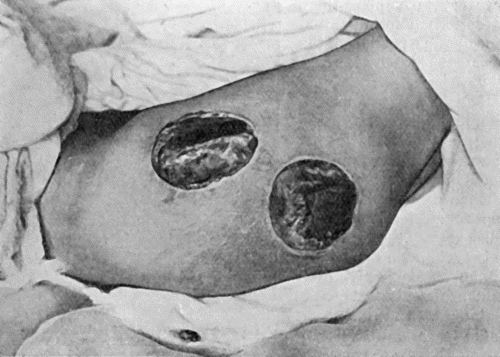
Fig. 24.—Acute Bed-Sores over Right Buttock.
Bed-sores are most frequently met with in old and debilitated patients, or in those whose tissues are devitalised by acute or chronic diseases associated with stagnation of blood in the peripheral veins. Any interference with the nerve-supply of the skin, whether from injury or disease of the central nervous system or of the peripheral nerves, strongly predisposes to the formation of bed-sores. Prolonged and excessive pressure over a bony prominence, especially if the parts be moist with skin secretions, urine, or wound discharges, determines the formation of a sore. Excoriations, which may develop into true bed-sores, sometimes form where two skin surfaces remain constantly apposed, as in the region of the scrotum or labium, under pendulous mammę, or between fingers or toes confined in a splint.
Clinical Features.—Two clinical varieties are met with—the acute and the chronic bed-sore.
The acute bed-sore usually occurs over the sacrum or buttock. It develops rapidly after spinal injuries and in the course of certain brain diseases. The part affected becomes red and congested, while the surrounding parts are œdematous and swollen, blisters form, and the skin loses its vitality (Fig. 24).
In advanced cases of general paralysis of the insane, a peculiar form of acute bed-sore beginning as a blister, and passing on to the formation of a black, dry eschar, which slowly separates, occurs on such parts as the medial side of the knee, the angle of the scapula, and the heel.
The chronic bed-sore begins as a dusky reddish purple patch, which gradually becomes darker till it is almost black. The parts around are œdematous, and a blister may form. This bursts and exposes the papillę of the skin, which are of a greenish hue. A tough greyish-black slough forms, and is slowly separated. It is not uncommon for the gangrenous area to continue to spread both in width and in depth till it reaches the periosteum or bone. Bed-sores over the sacrum sometimes implicate the vertebral canal and lead to spinal meningitis, which usually proves fatal.
In old and debilitated patients the septic absorption taking place from a bed-sore often proves a serious complication of other surgical conditions. From this cause, for example, old people may succumb during the treatment of a fractured thigh.
The granulating surface left on the separation of the slough tends to heal comparatively rapidly.
Prevention of Bed-sores.—The first essential in the prevention of bed-sores is the regular changing of the patient's position, so that no one part of the body is continuously pressed upon for any length of time. Ring-pads of wool, air-cushions, or water-beds are necessary to remove pressure from prominent parts. Absolute dryness of the skin is all-important. At least once a day, the sacrum, buttocks, shoulder-blades, heels, elbows, malleoli, or other parts exposed to pressure, must be sponged with soap and water, thoroughly dried, and then rubbed with methylated spirit, which is allowed to dry on the skin. Dusting the part with boracic acid powder not only keeps it dry, but prevents the development of bacteria in the skin secretions.
In operation cases, care must be taken that irritating chemicals used to purify the skin do not collect under the patient and remain in contact with the skin of the sacrum and buttocks during the time he is on the operating-table. There is reason to believe that the so-called “post-operation bed-sore” may be due to such causes. A similar result has been known to follow soiling of the sheets by the escape of a turpentine enema.
Treatment.—Once a bed-sore has formed, every effort must be made to prevent its spread. Alcohol is used to cleanse the broken surface, and dry absorbent dressings are applied and frequently changed. It is sometimes found necessary to employ moist or oily substances, such as boracic poultices, eucalyptus ointment, or balsam of Peru, to facilitate the separation of sloughs, or to promote the growth of granulations. In patients who are not extremely debilitated the slough may be excised, the raw surface scraped, and then painted with iodine.
Skin-grafting is sometimes useful in covering in the large raw surface left after separation or removal of sloughs.